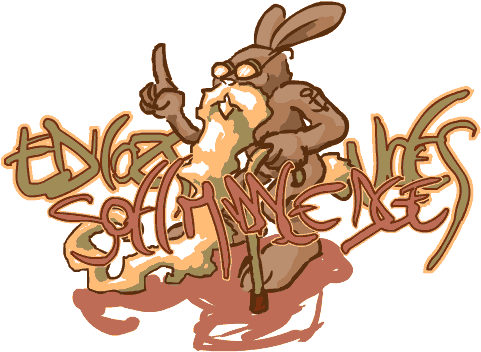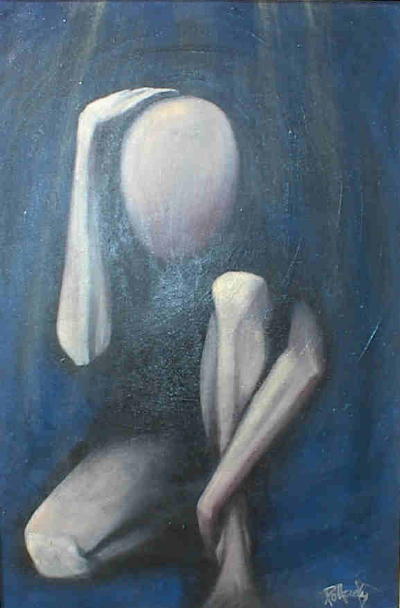On 17 March 2009, the
Commonwealth Court of Pennsylvania issued an
opinion in an appeal of the case of
Glenside Center, Inc. [a clubhouse hosting meetings of various twelve-step programs] v.
Abington Township. A lower court had found that the
Glenside Center violated local zoning laws, after the Township received numerous complaints regarding an "adverse parking situation" that "made driving difficult and dangerous and prevented emergency traffic from getting through." There were also complaints about "urinating in public, using obscene language and trash which had been left by members attending meetings." Excessive noise and loitering are also mentioned in the opinion. (Clearly demonstrating the danger of these kinds of totally inappropriate, inconsiderate and non-sober behavior at
any A.A. meeting.)
The appeal was on the basis of four issues, namely that the Zoning Board:
- had incorrectly found that the use of the building did not meet the requirement of being primarily used as an "office,"
- had denied the clubhouse its rights under RLUIPA1,
- had violated the clubhouse's right to free exercise of religion by determining that the clubhouse was a "Community Center," and
- had failed to prove a compelling governmental interest and had failed to use the least restrictive means to further that interest.
My interest is only in the 2
nd and 3
rd issues insofar as they relate to whether or not A.A. can legally be considered a religion. In its opinion, the Court essentially determined that Alcoholics Anonymous is not a religion:
Glenside argues... it is a protected entity under RLUIPA because its activities are a religious exercise.... Glenside argues that AA is not a religion, but its activities and programs constitute a free exercise of religion under RLUIPA. It contends that the 12-step program that AA follows is certainly based upon a belief in a higher power, and various AA members testified that they found a connection with God by attending AA meetings. Glenside directs our attention to a New York Court of Appeals case, Griffin v. Coughlin,... which held that an AA meeting constituted an exercise of religion.
The Board, however, argues and we agree that Glenside presents no binding authority for its proposition that an AA meeting is a religious exercise as that term is used in RLUIPA.2 Glenside failed to prove that any of the meetings are administered by a religious leader, i.e., a minister, priest, rabbi or other spiritual leader. Glenside does not hold any religious services or have any religious affiliations. Its Articles of Incorporation state nothing about being incorporated for a religious purpose, but only to assist people in recovering from addiction. Similarly, Glenside’s printed materials state that Glenside is not a religious organization and do not require that members possess any religious belief to participate. While Glenside argues that members have found a connection with God at its meetings, clearly, the primary purpose of the group meetings, whether they be for AA, NA or DA, is to support individuals who are recovering from alcohol, drug, gambling and debtor addictions, not to advance religion. Particularly where AA and NA meetings are concerned, the primary concern of those meetings is to treat substance abuse. Moreover, Glenside and others on its behalf testified that members come from all religious walks of life whether they be Catholic, Protestant, Jewish, Muslim or non-believers in a higher power. The fact that the 12-step program is used and it contains references to “God” and a “Higher Power” does not mean that all members believe that they are partaking in a religious experience when they are attending an AA or NA meeting.
Good for the Court, bad for
Glenside Center, Inc. Bad, not because they lost their appeal, but for (1) encouraging the courts to consider A.A. a religion, (2) giving the appearance of violating A.A. tradition of having no opinion on outside issues, and (3) for providing a forum for a number of members of A.A. to violate A.A.'s tradition of anonymity at the level of press, radio and film (not to mention on television and on the Internet).
Glenside Center is not in any sense A.A. or part of A.A. It is a separately organized enterprise with the [presumable] purpose of providing meeting space for various twelve-step organizations. From the point of view of A.A. groups, it is in no respect different from a church, municipal building or community center providing space for meetings—all these entities are nothing more than landlords.
However, I suspect that all the principals of the
Glenside Center are members of A.A. As stated in the opinion, many of those who testified on behalf of the
Glenside Center are also members of A.A. One was identified by full name as a member of A.A. for 53 years (you'd think he'd know better after
that long). The Center's argument included the following:
While AA or its related organizations do not claim to be an established religion, the constituent groups can and have been viewed as engaging in an exercise of religion. The Act broadly defines religious exercise to include "any exercise of religion, whether or not compelled by, or central to, a system of religious beliefs."
I became aware of this ruling when a friend in A.A. sent me a link to
an entry about it in a
Washington Post blog named "
Under God." In it, David Waters argues that the Court made a mistake on the basis of four objections. After each objection, I'll give my objections to Mr Waters' objections.
Objection 1: Any person of faith can be a spiritual leader.
Actually, I would go even further than Mr Waters. Lack of "a religious leader, i.e., a minister, priest, rabbi or other spiritual leader" should not preclude a gathering from being religious. A prime example would be an
unprogrammed meeting for worship of the
Religious Society of Friends, commonly known as Quakers.
Objection 2: Assisting people in recovering from any addiction is a religious (and spiritual) purpose.
Accepting this argument would make every rehab and detox in the U.S. a religious organization. It would also make seeing any health-care practitioner for help with an addiction into a religious activity.
Objection 3: Any group that advances the healing of bodies and souls (and the forgiveness of debts and debtors) also advances religion.
By this argument, entering into any course of psychiatric or psychological therapy, participating in any of numerous self-help organizations or classes, going to see the doctor, going to the gym to work out, or seeking credit counseling would be considered a religious activity. This is patently absurd.
Objection 4: Clearly the court is unaware of the history and purpose of AA.
Clearly Mr Waters is not fully aware of the history and purpose of A.A. Let me address each of the facts he cites in support of his objection.
Alcoholics Anonymous was founded as a spiritual program, direct outgrowth of the Oxford Group at Calvary Episcopal Church in New York.
True. But it's also true that the Oxford Group (known since 2001 as
Initiatives of Change)
considered itself non-religious. Furthermore A.A. separated from the Oxford Group at least in part due to the
latter's belief that alcoholism was a sin rather than a disease, and to sever what might appear as ties to a Christian organization.
AA meetings include recitations of The Lord's Prayer and the Serenity Prayer.
Actually, this seems to me to be a reasonably good argument. It's one reason I do not participate in saying the Lord's Prayer at meetings. Not
all meetings use the Lord's Prayer, though I'd have to say that most in the U.S.
3 do. As for the
Serenity Prayer, so far as I know, it is not perceived to be associated with Christianity, despite its
purported author being a Christian theologian. As insightful as it may be to us drunks, the idea would seem to be quite universal in thought and application among those who consider and practice such things. Indeed, the essential idea can be found in a Mother Goose rhyme:
- For every ailment under the sun
- There is a remedy, or there is none;
- If there be one, try to find it;
- If there be none, never mind it.
Back to Mr Waters' argument:
"AA indirectly derived much of its inspiration from the Church," Rev. Samuel M. Shoemaker, Rector of Calvary Church, said in 1955.
Key word:
indirectly. I'd say that a huge number of institutions of Western civilization were indirectly derived from Christianity, not the least of which is the United States of America. Furthermore, citing a single person—a non-A.A. member at that—saying this in a single speech is not much of an argument. Bill W., co-founder of A.A. and a much better source to cite, said of the phrase
God as we understood him that it was "tremendously important," "a ten-strike," enabling "thousands to join AA who would have otherwise gone away," opening the door to "those of fine religious training and those of none at all," making "one’s religion the business of the AA member himself and not that of his society."
4
AA's Twelve Traditions includes No. 2: "For our group purpose there is but one ultimate authority -- a loving God as He may express Himself in our group conscience." Seven of AA's famous Twelve Steps reference God, including:
- 2. Came to believe that a Power greater than ourselves could restore us to sanity.
- 3. Made a decision to turn our will and our lives over to the care of God as we understood Him.
- 11. Sought through prayer and meditation to improve our conscious contact with God as we understood Him, praying only for knowledge of His will for us and the power to carry that out.
- 12. Having had a spiritual awakening as the result of these steps, we tried to carry this message to alcoholics and to practice these principles in all our affairs.
Newcomers to A.A. are commonly encourage to find a power greater than themselves even if that power is nothing more than a doorknob or an ashtray. Many A.A. members attain long-term sobriety using A.A. itself as a higher power (God is sometimes identified as an acronym, standing for "Group of Drunks"). Even casual acquaintance with A.A.'s program makes it clear that this higher power can be of whatever conception one so chooses. See also the quote of Bill W.'s referred to above.
"Would that the Church were like this," Shoemaker said in 1955, "ordinary men and women with great need who have found a great Answer, and do not hesitate to make it known wherever they can - a trained army of enthusiastic, humble, human workers whose efforts make life a different thing for other people!"
Is Mr Waters saying that a non-religious group of people cannot exhibit these same characteristics? I suspect that any number of political activists would be happy with such a description.
If a group that meets under spiritual precepts, performs rituals, and seeks to heal its members isn't religious, what else is it?
Rituals? To what rituals does Mr Waters refer? He hasn't mentioned any up to this point in the article and doesn't mention any after this either. And without rituals, all that's left is a group that uses spiritual precepts and seeks to heal its members. In at least one sense of the word
spiritual, a vast number of groups satisfy this description.
Indeed, much of the argument comes down to whether or not there is a difference between spirituality and religion, and what that difference might be. From the
American Heritage Dictionary:
spir·i·tu·al
ADJECTIVE:1. Of, relating to, consisting of, or having the nature of spirit; not tangible or material. See synonyms at immaterial. 2. Of, concerned with, or affecting the soul. 3. Of, from, or relating to God; deific. 4. Of or belonging to a church or religion; sacred. 5. Relating to or having the nature of spirits or a spirit; supernatural.
As will be clear to anyone who is familiar with A.A. and its program of recovery, A.A. itself would not accept any definition other than one with the broadest possible meaning. The meaning of A.A. being a spiritual program could be that it is religious to the member who is herself religious. That meaning could be only that it is intangible or immaterial to the member who is himself
not religious. A.A. itself doesn't care. A.A. is
areligious.
1Religious Land Use and Institutionalized Persons Act—a
federal statute passed in 2000 to provide stronger protection for religious freedom in the land-use and prison contexts.
2The opinion footnotes this sentence with the following:
RLUIPA defines “Religious exercise” as follows:
(A) In general. The term “religious exercise” includes any exercise of religion, whether or not compelled by, or central to, a system of religious belief.
(B) Rule. The use, building, or conversion of real property for the purpose of religious exercise shall be considered to be religious exercise of the person or entity that uses or intends to use the property for that purpose.
3I know from personal experience that the Lord's Prayer is rarely used in Australia, and that because of this Australian members of A.A. pride themselves on being more consistent with A.A. principles than A.A. in the U.S. is.
4Full quote, from
A Conversation with Bill W., A Synopsis of the Question-Answer Period following Bill W.'s talk at the
NCCA Syposium in New York in 1960:
When these Steps were shown to my friends, their reactions were mixed indeed. Some argued that six steps had worked fine, so why twelve? From our agnostic contingent there were loud cries of too much “God.” Others objected to an expression which I had included which suggested getting on one’s knees while in prayer. I heavily resisted these objections for months. But I finally did my statement about a suitable prayerful posture and finally went along with that now tremendously important expression, “God as we understand Him” — this expression having been coined, I think, by one of our former atheist members. This was indeed a ten-strike. That one has since enabled thousands to join AA who would have otherwise gone away. It enabled people of fine religious training and those of none at all to associate freely and to work together. It made one’s religion the business of the AA member himself and not that of his society.





























